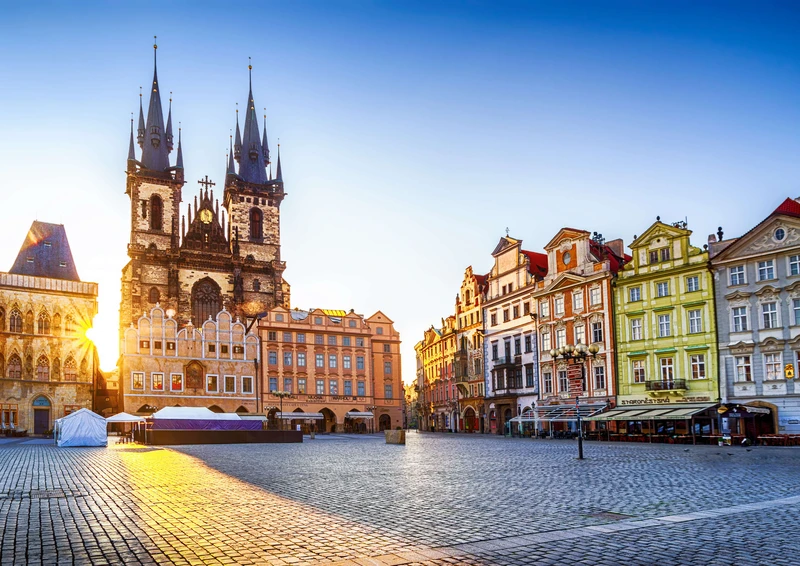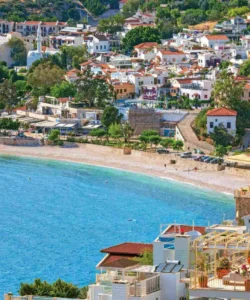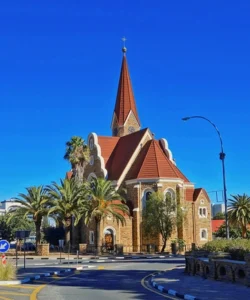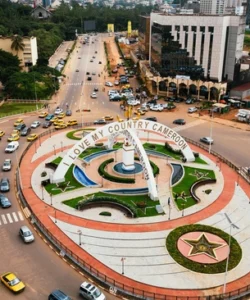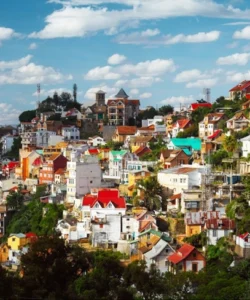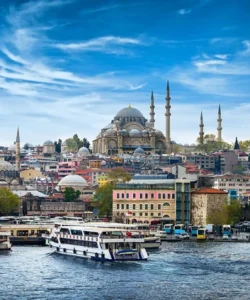The Czech Republic, also known as Czechia, is a landlocked country in Central Europe. It borders Germany to the west, Poland to the north, Slovakia to the southeast, and Austria to the south. The Czech Republic is renowned for its rich history, stunning architecture, vibrant culture, and world-famous beer.
Listen to an introduction about Czech Republic
![]()
Area: Approximately 78,866 square kilometers (30,450 sq mi).
Population: As of 2023, the population is estimated at around 10.9 million.
Language: The official language is Czech, a West Slavic language. Slovak is mutually intelligible and also widely understood. English is increasingly spoken, especially by younger generations and in major tourist areas like Prague. German is also understood by some, particularly the older generation.
Currency: The official currency is the Czech Koruna (CZK). While a member of the European Union, the Czech Republic has not adopted the Euro.
Religion: The Czech Republic is one of the most secular countries in Europe. While historically Catholic, a large portion of the population identifies as non-religious or irreligious. The largest religious affiliations are Roman Catholicism, various Protestant denominations (e.g., Hussite, Czech Brethren), and Eastern Orthodoxy.
Capital: Prague is the capital and largest city of the Czech Republic. It is widely regarded as one of Europe’s most beautiful cities, famous for its historic Old Town, Charles Bridge, Prague Castle, and diverse architectural styles.
Major Cities: Besides Prague, other significant cities include Brno, Ostrava, Plzeň, Liberec, Olomouc, and České Budějovice.
Attractions & Wonders: The Czech Republic offers a wealth of historical, architectural, and natural attractions:
- Prague:
- Prague Castle (Pražský hrad): A magnificent complex of palaces, churches, and gardens, including St. Vitus Cathedral, St. George’s Basilica, and the Old Royal Palace. It’s the largest ancient castle in the world.
- Charles Bridge (Karlův most): An iconic medieval stone bridge adorned with Baroque statues, connecting the Old Town and Lesser Town.
- Old Town Square (Staroměstské náměstí): The historic heart of Prague, featuring the Astronomical Clock, Týn Church, St. Nicholas Church, and vibrant markets.
- Jewish Quarter (Josefov): A historic district with synagogues, the Old Jewish Cemetery, and the Jewish Museum.
- St. Vitus Cathedral: A stunning Gothic cathedral within Prague Castle, a masterpiece of architecture.
- Lesser Town (Malá Strana): A picturesque district with Baroque palaces, gardens, and charming streets.
- Wenceslas Square (Václavské náměstí): A bustling boulevard and cultural hub.
- Český Krumlov: A UNESCO World Heritage site, a picturesque medieval town in South Bohemia dominated by its stunning castle and winding Vltava River.
- Kutná Hora: A UNESCO World Heritage site, a medieval silver mining town known for its St. Barbara’s Cathedral and the macabre Sedlec Ossuary (Bone Church).
- Karlovy Vary (Carlsbad): A famous spa town in West Bohemia, known for its thermal springs, elegant colonnades, and grand architecture.
- Plzeň: The birthplace of Pilsner Urquell beer, offering brewery tours and a historic city center.
- Brno: The second-largest city, known for its Špilberk Castle and Cathedral of St. Peter and Paul.
- Bohemian Paradise (Český ráj): A protected landscape area with unique sandstone rock formations, castles, and picturesque valleys, popular for hiking.
- Telč: A UNESCO World Heritage site, a beautiful town with a stunning Renaissance chateau and a well-preserved town square with colorful houses.
- Kroměříž: A UNESCO World Heritage site, featuring a Baroque chateau and magnificent gardens (Flower Garden and Pleasure Garden).
- Pravčická brána: The largest natural sandstone arch in Europe, located in Bohemian Switzerland National Park, a stunning natural landmark.
Architecture: Czech architecture is renowned for its stylistic diversity, reflecting centuries of history and artistic movements:
- Romanesque: Evident in some rotunda churches and remnants of castles.
- Gothic: Magnificent examples include St. Vitus Cathedral and Týn Church in Prague, and St. Barbara’s Cathedral in Kutná Hora.
- Renaissance: Seen in palaces and townhouses (e.g., Telč, Litomyšl, and some parts of Prague Castle).
- Baroque: The dominant style of the Counter-Reformation, resulting in grand churches, palaces, and statues, particularly in Prague (Lesser Town) and throughout Bohemia.
- Art Nouveau: Prominent in early 20th-century Prague (e.g., Municipal House, Main Railway Station).
- Cubist Architecture: Prague has a unique collection of Cubist buildings, a rare architectural style.
- Functionalism: Flourished in the interwar period (e.g., Villa Tugendhat in Brno, a UNESCO site).
- Socialist Realism: Remnants of Soviet-era functionalist and monumental architecture, particularly outside the historic centers.
- Contemporary: Modern Czech architecture is diverse, with innovative designs, often blending modern aesthetics with historical context.
Roads: The Czech Republic has a well-developed and generally good road network. Highways (D-roads) and expressways (R-roads) connect major cities and borders. Secondary roads are also generally well-maintained, though quality can vary in rural areas. Driving is efficient, and traffic flows well outside of peak hours in major urban centers. A toll vignette is required for motorways.
Hotels: The Czech Republic offers a wide range of accommodation options. In Prague, you’ll find everything from luxurious five-star international hotels and charming boutique hotels in the historic center to budget-friendly hostels and apartments. Throughout the country, especially in popular tourist regions and spa towns, there are elegant hotels, guesthouses (penziony), traditional inns, and smaller family-run establishments.
Restaurants: Czech cuisine is hearty and often rich, with strong influences from German, Austrian, and Hungarian culinary traditions. It features staples like meat (pork, beef, poultry), potatoes, dumplings, and sauces.
- Prague offers a vibrant culinary scene, from traditional Czech pubs and restaurants to fine dining establishments and a wide array of international cuisines.
- Traditional Czech Dishes:
- Vepřo-knedlo-zelo: Roasted pork with bread dumplings (houskové knedlíky) and sauerkraut (zelí), a quintessential Czech dish.
- Svíčková na smetaně: Marinated beef sirloin in a creamy vegetable sauce, served with bread dumplings and often cranberries and whipped cream.
- Guláš: A rich meat stew, usually beef, thicker than its Hungarian counterpart, served with bread dumplings.
- Trdelník: A sweet pastry made from rolled dough wrapped around a stick, grilled, and topped with sugar and walnuts, a popular street food.
- Bramboráky: Potato pancakes, often spiced with garlic and marjoram.
- Smažený sýr: Fried cheese, often served with tartar sauce and French fries.
- Pivo (Beer): The Czech Republic has a long and proud brewing tradition and is famous for its high beer consumption. Pilsner Urquell, Budweiser Budvar, and Staropramen are well-known brands.
- Knedlíky: Dumplings are a staple, served with almost every main dish (bread dumplings, potato dumplings).
- Soups: Soups are a common starter, including česnečka (garlic soup) and kulajda (creamy mushroom and potato soup with dill).
- Desserts: Often include fruit dumplings (ovocné knedlíky), apple strudel (jablečný závin), and various cakes.
